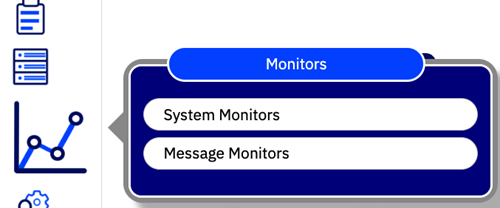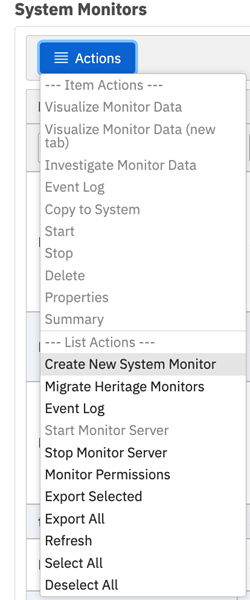Getting Started with IBM i Navigator System Monitors, Revisited
Dawn May explains how to set up system monitors in Navigator for i
This article is a reworked version of the July 2021 post on system monitors. That post was based upon Heritage Navigator; this post provides updated information on system monitors in Navigator today.
This post reviews the features of system monitors in Navigator for i. I recommend installing the latest HTTP Server Group PTF for full System Monitor functionality.
Everyone should be proactively monitoring key metrics on IBM i. If you are not already monitoring your system, I recommend getting started with IBM i system monitors, which are included with Navigator for i. System Monitors are found in Navigator as shown in the following figure.

When you launch System Monitors, it displays a table with the monitors previously created on that partition. If you have not yet created any system monitors, the list is empty.
To get started with system monitors, you must first create a monitor; this action is available in the Actions drop down, as shown below.

When you create a system monitor, you must give it a name. A description is optional, but it’s a good idea to include a bit of information about what you’re monitoring. Then, select the metrics you wish to include in your monitor and use the right-pointing arrow to add them to the list of Metrics to Monitor.
The list of selectable metrics is static—you cannot define other metrics to monitor. This list includes the typical performance metrics that you would expect: CPU utilization, faulting rates, disk response time, interactive response time and more. In addition to performance metrics, you can also monitor key system health metrics such as disk storage utilization, temporary storage utilization and spooled file creation rate.
The collection interval is set with the drop-down box next to the selected metric. The default is 60 seconds, which is good for most circumstances. Use care in making this interval smaller as it increases the amount of data collected by the system.
The next step is to configure thresholds and add notifications. This is important to do as it allows you to specify values at which you want to be notified and what form that notification takes.
Regardless of what metric you are monitoring, you can define two thresholds. I think of these as warning and error thresholds, where warning is the point in which you want to be notified that the metric is above expected levels, and the error is the point in which action must be taken. Note that thresholds can also be set to identify the absence of something; for example, you could monitor for CPU utilization that is too low in case something is not running. To configure the threshold, click on the Threshold1 or Threshold2 link next to the metric name, which opens the Configure Threshold page.
Using the CPU Utilization (Average) metric as an example, the configure threshold panel looks like the screen capture below:

The Trigger is when to notify you the threshold has been exceeded; the Reset threshold defines when a situation is resolved.
The Duration setting is how many intervals (i.e., how long must the issue persist) before the notification is sent. For some metrics—CPU utilization is a good example—having a peak for one interval is probably not a concern, but if the issue persists for many intervals, then you want to know about it.
The Operating System Command is where you specify what action you want to take when the threshold is reached. It could be something simple like sending a message to QSYSOPR or sending an email message with SNDSMTPEMM. It can be a CALL to a program to take any action you want. IBM i system monitors support replacement variables, which provides a way for the notification to include information about the monitor and the threshold that was reached. Navigator for i has a button that easily allows you to display the replacement variables that can be used and a link to documentation on them.
After adding and configuring your metrics, you can complete the creation of your system monitor by clicking OK, which takes you back to the table of system monitors. You can review the full details of the monitor by right-clicking on the monitor and selecting Summary. This displays each metric along with the trigger and reset threshold values, including the operating system command specified for each trigger.
Once you have defined your system monitor, you need to start it. When the system monitor is active and thresholds are reached, you will automatically be notified via the operating system command you specified.
System monitors are automatically started after an IPL; if the monitor was active when the IPL occurred, it will be restarted once the IPL is complete.
There’s much more to know about system monitors, so look for additional posts on this topic.
You can read about monitors in the IBM Documentation at Navigator for i Monitors. The IBM Developer pages has more detailed information at System Monitors Overview.